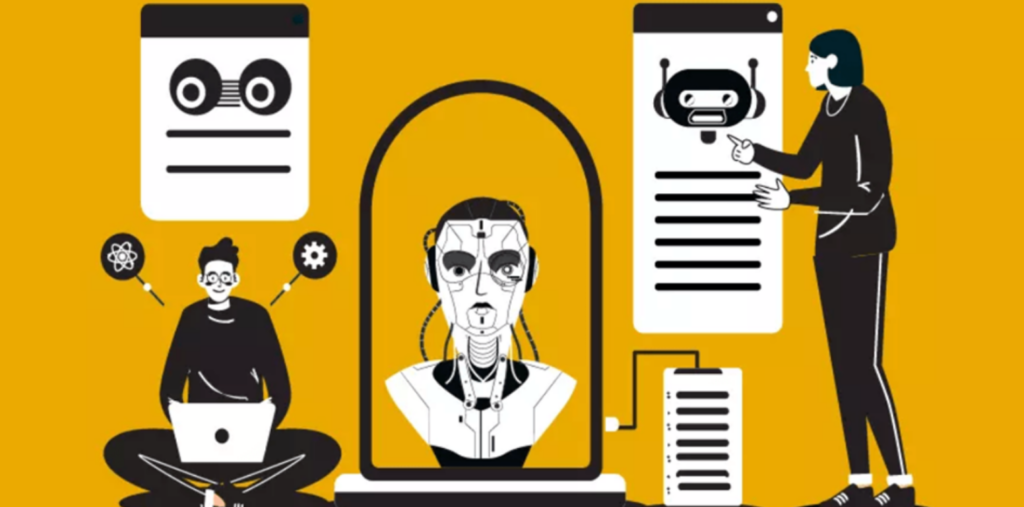blog post
AI to the Rescue

The financial fallout from cyber-crime will exceed $10 trillion by 2025. In terms of GDP comparisons, that number would be the world’s third-largest economy, only outpaced by the U.S. and China and ahead of Japan’s most recently reported $4 Trillion.
Despite the grim news, AI will soon act as a formidable ally against cybercrime, with the caveat that hackers are also harnessing AI to craft more sophisticated attacks.
AI: The Double-Edged Sword in Cybersecurity Cybercriminals are increasingly deploying AI to devise new malware, automate phishing onslaughts, probe security vulnerabilities, and craft deepfakes and malicious bots for impersonation.
However, the rise of AI and its native leveragability is empowering cybersecurity efforts to mount a more potent defense than ever before.
AI will battle cybercrime through a multi-faceted approach:
- Behavioral Monitoring and Analysis: AI scrutinizes behavior patterns, spotlighting anomalies like unfamiliar users, irregular login activities, and sudden changes in file permissions at speeds never imagined.
- Predictive Analysis: By comparing detected anomalies with historical data, AI forecasts potential subsequent actions and likely ramifications in real time.
- Proactive Prevention: AI swiftly intervenes upon identifying threats, taking measures such as halting unauthorized actions and alerting administrators with immediacy.
- Continuous Learning: AI systems refine themselves through machine learning (ML), enhancing their capability to spot suspicious activities and predict outcomes, can be trained to create antifragile versions of themselves following an attack and be stronger without human intervention.
AI vs. Traditional Cybersecurity Systems: The Advantages AI brings several advantages to the cybersecurity arena. Foremost among these is ML, enabling AI to evolve and prepare for future threats autonomously. AI alleviates the burden on human operators by sifting through vast datasets and reducing false positives, ensuring only critical alerts are flagged. Furthermore, AI automates routine tasks like event monitoring and penetration testing, allowing for continuous, real-time defense.
The application of AI in cybersecurity also addresses the shortfall in human resources, projected to hit 3.5 million unfilled positions in 2023. AI enhancing Endpoint Detection and Response (EDR) and Security Information and Event Management (SIEM) can partially offset this shortage.
Moreover, by automating mundane tasks, AI allows cybersecurity teams to focus on strategic and decision-making aspects, thereby boosting productivity and threat mitigation efforts, learning and re-imagining existing systems as antifragile versions of themselves.
Areas for Enhancement Despite its prowess, AI in cybersecurity is not without its challenges. With today’s beta systems, hackers can sometimes outsmart AI systems by manipulating data or mimicking normal network behavior. Additionally, while AI is adept at reducing false positives, there’s still room for improvement. Also, like any human-made product, AI algorithms can sometimes be marred by inadvertent errors or biases. But the product category has been in market less than a year which is like a minute in technology lifecycles. It will get better and smarter every week, so we won’t have to.
The consensus among experts is clear: the merits of integrating AI into cybersecurity strategies significantly overshadow the potential risks and limitations, making it an indispensable tool in the ongoing battle against cybercrime.
We just need to understand where and why and apply some critical thinking around the problem space.
Author
Steve King
Managing Director, CyberEd
King, an experienced cybersecurity professional, has served in senior leadership roles in technology development for the past 20 years. He has founded nine startups, including Endymion Systems and seeCommerce. He has held leadership roles in marketing and product development, operating as CEO, CTO and CISO for several startups, including Netswitch Technology Management. He also served as CIO for Memorex and was the co-founder of the Cambridge Systems Group.

